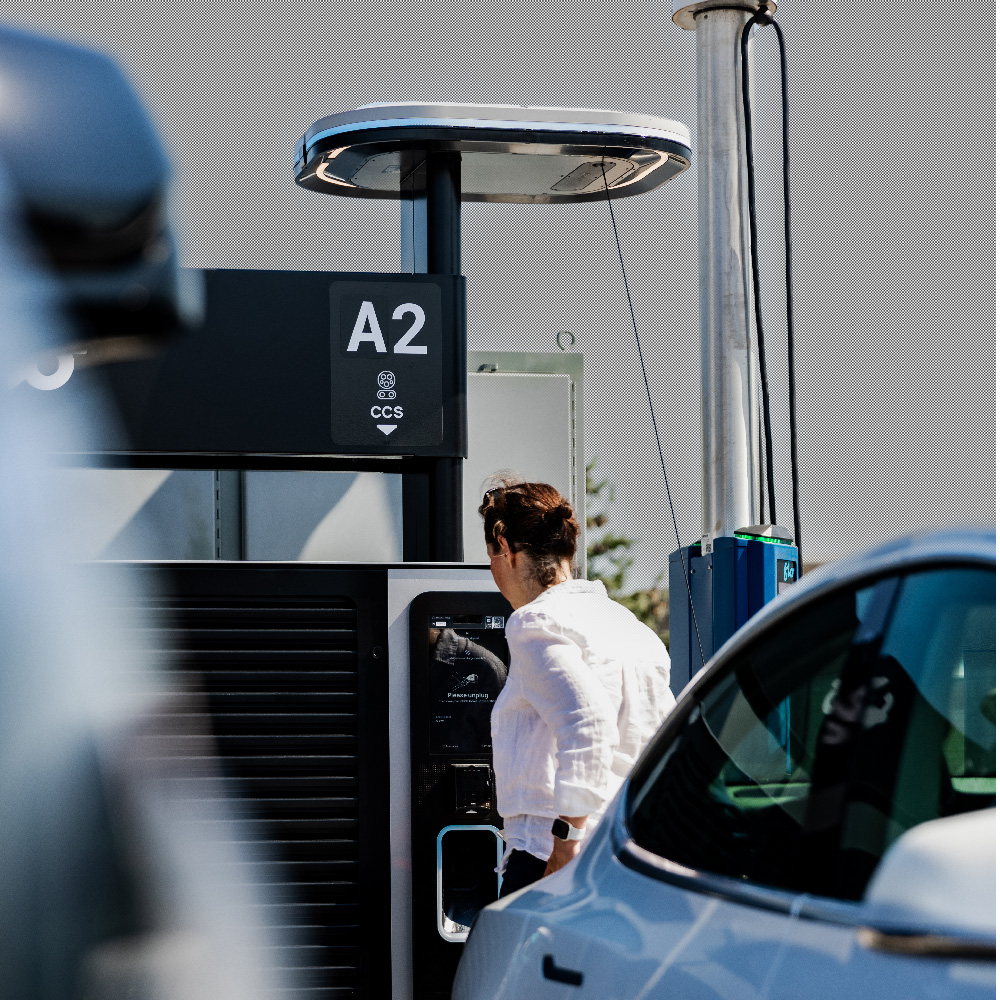Best practices to follow in hot weather
Hot summer weather is upon us, and with that, questions about how best to protect your electric vehicle (EV) from the scorching temperatures we tend to face across North America. Here are a few suggestions to help your vehicle perform well and keep its cool this summer.
Chasing the perfect cabin temperature – Range implications of air conditioning
From our homes to our cars and workplaces, we are always searching for the ideal temperature wherever we are. In the winter, we crank up the heat, in the summer, we run the air conditioner. There are implications for the range of your EV with the air conditioning on, but it turns out that EV range is typically better in the summer – despite air conditioning.
In a recent study on Summer and Hot Weather on Electric Car Range, the folks at Recurrent Auto attributed the decrease in range loss over the summer to the fact that “the difference between a comfortable cabin temperature (e.g., 70°F / 21°C) and the outside temperature is usually smaller in the summer than the winter.” And that “cooling your EV’s cabin will be less range intensive than heating it.”
It makes sense to take advantage of the pre-cool feature in your EV for a few minutes before departure – this can be done while your vehicle is plugged in and should not have any impact on driving range – since it is pulling from a direct power source. Your cabin temperature will start off cooler which will help you use less AC overall. For some vehicles, “Dog or Pet Comfort Mode” is a useful feature that can help ensure that your pet and or produce don’t wilt, or worse, in the heat. Of course, this feature leverages battery power and is dependent on having at least 20% battery or it won’t engage, so always use with care.
How does outside temperature impact range?
The results from a recent four-season test on several EVs to find the impact of outside temperatures by Consumer Reports found that driving on a sunny, humid, mid-80-degree day saw the longest range, despite the use of the air conditioner.
Smart driving and the use of eco mode will help reduce energy consumption and optimize efficiency so that you get the most out of your vehicle in the heat, according to Kelley Blue Book’s Chris Hardy.
Read more: Do EV Drivers Charge More in the Cold?
Under pressure – where the rubber meets the road
It is crucial to check your tire pressure based on the manufacturer’s suggested frequency, and more imperative as the seasons change and temperatures fluctuate. Proper tire inflation affects not only the range of your EV, but also can be an important factor in safety and longevity. If you want maximum efficiency from your vehicle, regardless of the weather, maintaining your tire pressure makes an impact.
Of course, range is dependent on many things, vehicle make, driving habits, charge level, and load, to name a few – and temperature is just one more thing to fluctuate and contribute to the overall EV experience.
High heat and EV battery life
While studies have shown that generally EV batteries hold up very well, recent research by Recurrent Auto indicates that heat, high voltage and extreme state of charge are most likely to speed up battery degradation. And while many batteries have yet to hit the end-of-life stage yet, there is enough data to determine that high heat does impact battery life.
In a study on the EV battery health of over 6,000 units, Geotab found that batteries exposed to more than five days per year over 80°F (27°C) degrade faster. However, there are tips to extend the life of your EV battery:
- Follow your manufacturer’s charging guidelines, as overcharging can damage the battery
- Keep your vehicle charged between 20 – 80%
- Avoid extreme hot temperatures and park in the shade
With advancements in thermal management, EVs are designed to take the heat – drawing energy to cool as needed. Your battery management system will prevent the battery from overheating – so if you leave your car out in 100-degree weather, the thermal management system will likely kick in to ensure that your battery is in safe operating range.
Conservation practices that make sense
Hot weather events are decidedly cooler in the shade. From parking to charging, any chance to get out of the sun and into the shade is helpful. By charging early morning, evening or overnight with a new FLO Home level 2 charger – designed and rated for weather extremes – and by controlling your charge wherever you go by using the FLO app, you have the power to put less pressure on the grid, while taking advantage of lower utility rates.
Just as you would plan for any road trip, consider using the FLO app to see real-time charging status at public charging options located in covered or underground parking garages – bonus points if you locate a charger close to a park, pool or somewhere you can grab an ice cream or cold drink!
Read more: Travel guide: Planning your EV road trip
It’s clear that EVs are more than capable of handling the heat. By following best practices, you can ensure your vehicle operates efficiently and safely, even on the hottest days of the year. Whether it’s taking advantage of the shade, optimizing charging times or general vehicle maintenance, each small step goes a long way to ensuring that your EV remains your cool companion on the journey to a more sustainable future.


















